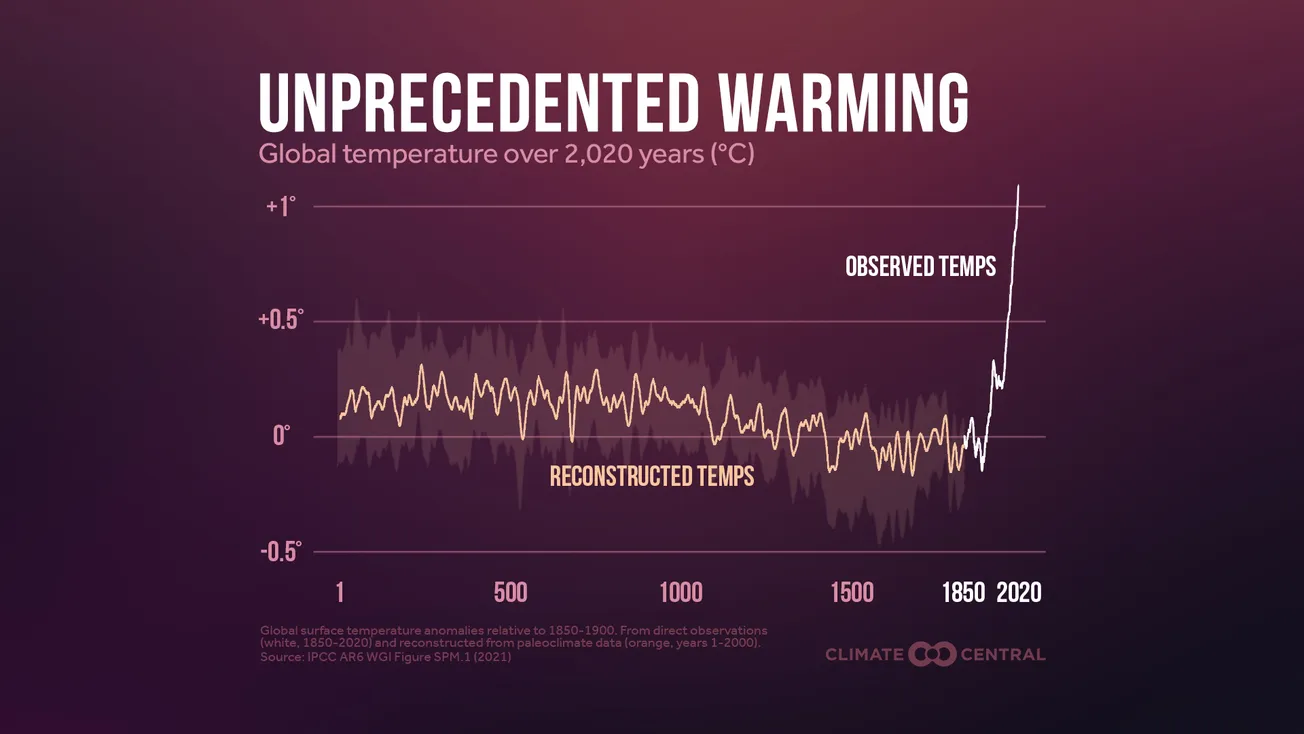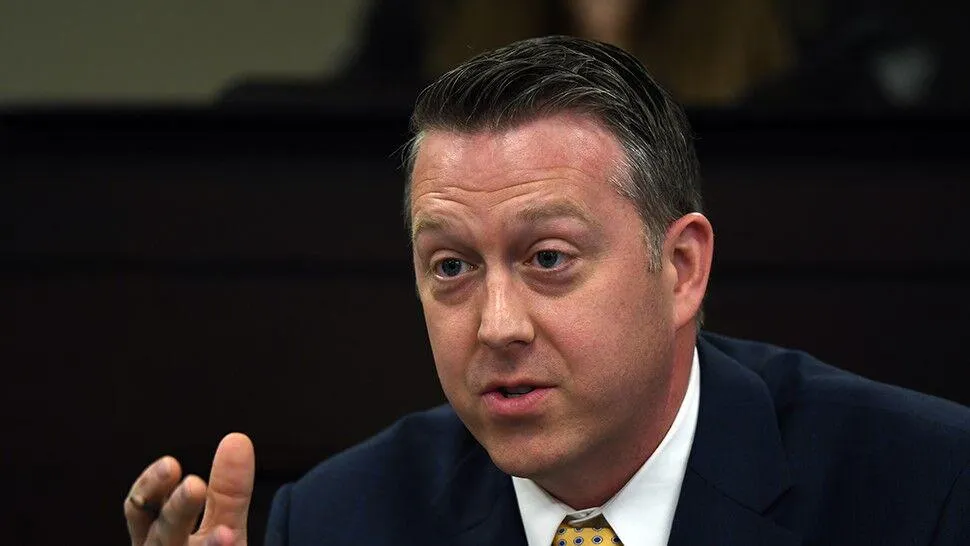With less than two weeks left in the year, 2023 is virtually certain to be Earth’s hottest year on record.
What does this historic year have to do with climate change? Here are five things.
1. In 2023, global temperatures surged beyond previous records.
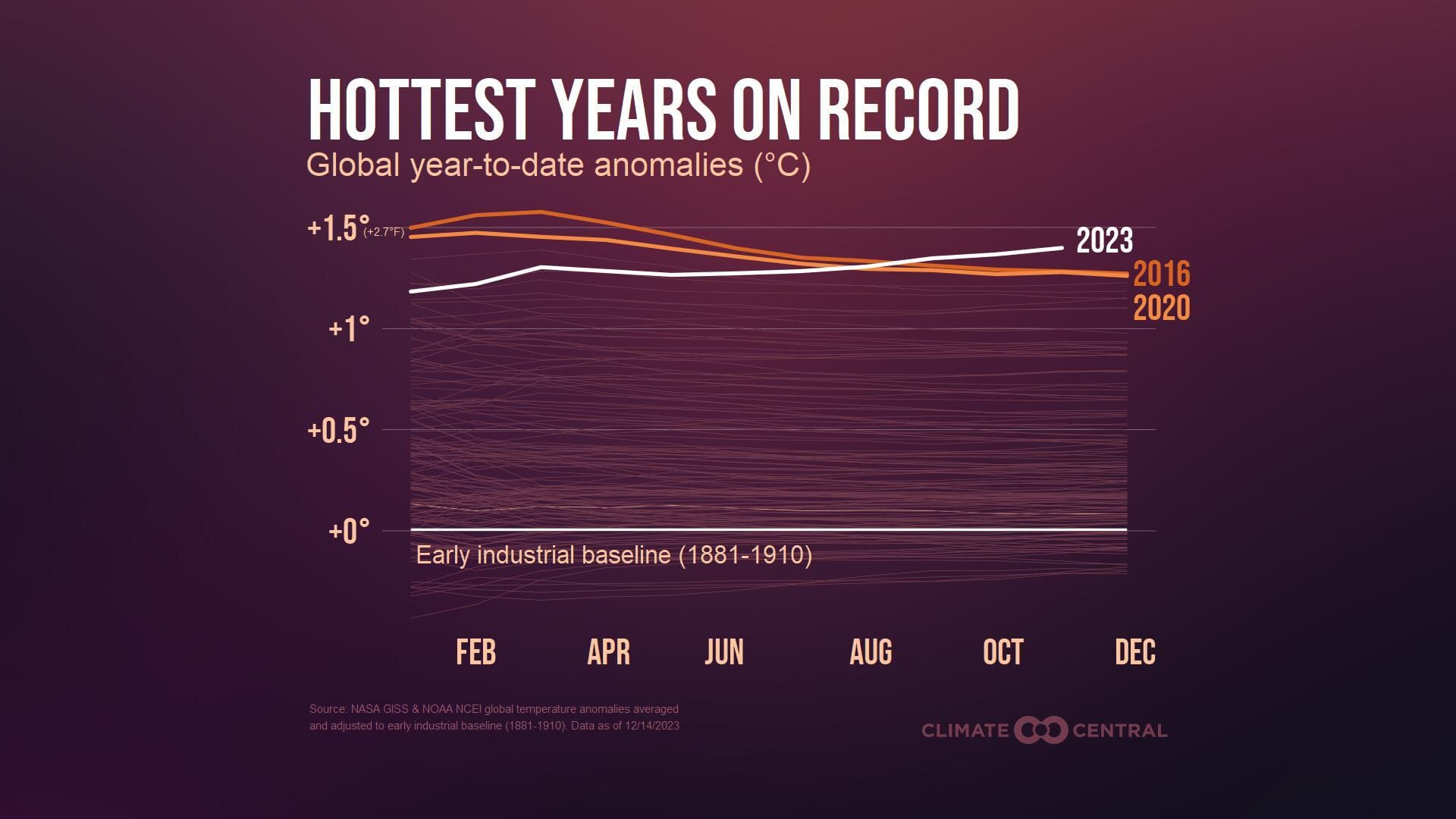
The first 11 months of 2023 have been the planet’s hottest since records began in the mid-1800s.
This year has a greater than 99% chance of being Earth’s hottest on record.
Global temperatures in 2023 shattered previous records for six continuous months (June to November), spanning the record-hottest boreal summer and fall seasons.
This year’s record global average temperatures reflect extreme and often dangerous heat events driven by human-caused climate change, including:
- During Earth’s single hottest month on record (July 2023), 81% of people on the planet experienced heat made more likely by human-caused climate change.
- Heat waves driven by climate change affected parts of Europe, China, the U.S., northern Africa, South America, South Asia, and Madagascar, according to World Weather Attribution.
- Led by San Juan, Puerto Rico, 45 U.S. cities experienced heat made at least 2x more likely by human-caused climate change on 50% to 98% of all summer days.
As the planet warms, many dangerous extreme events — from heat wavesto wildfires and heavy rainfall and flooding — have become more frequent and/or intense.
In the U.S., the average time between billion-dollar weather and climate disasters has decreased dramatically since 1980.
Extreme events like these put health and safety, livelihoods, infrastructure, and ecosystems at risk.
2. It’s not about one hot year. It’s about decades of rapid warming.
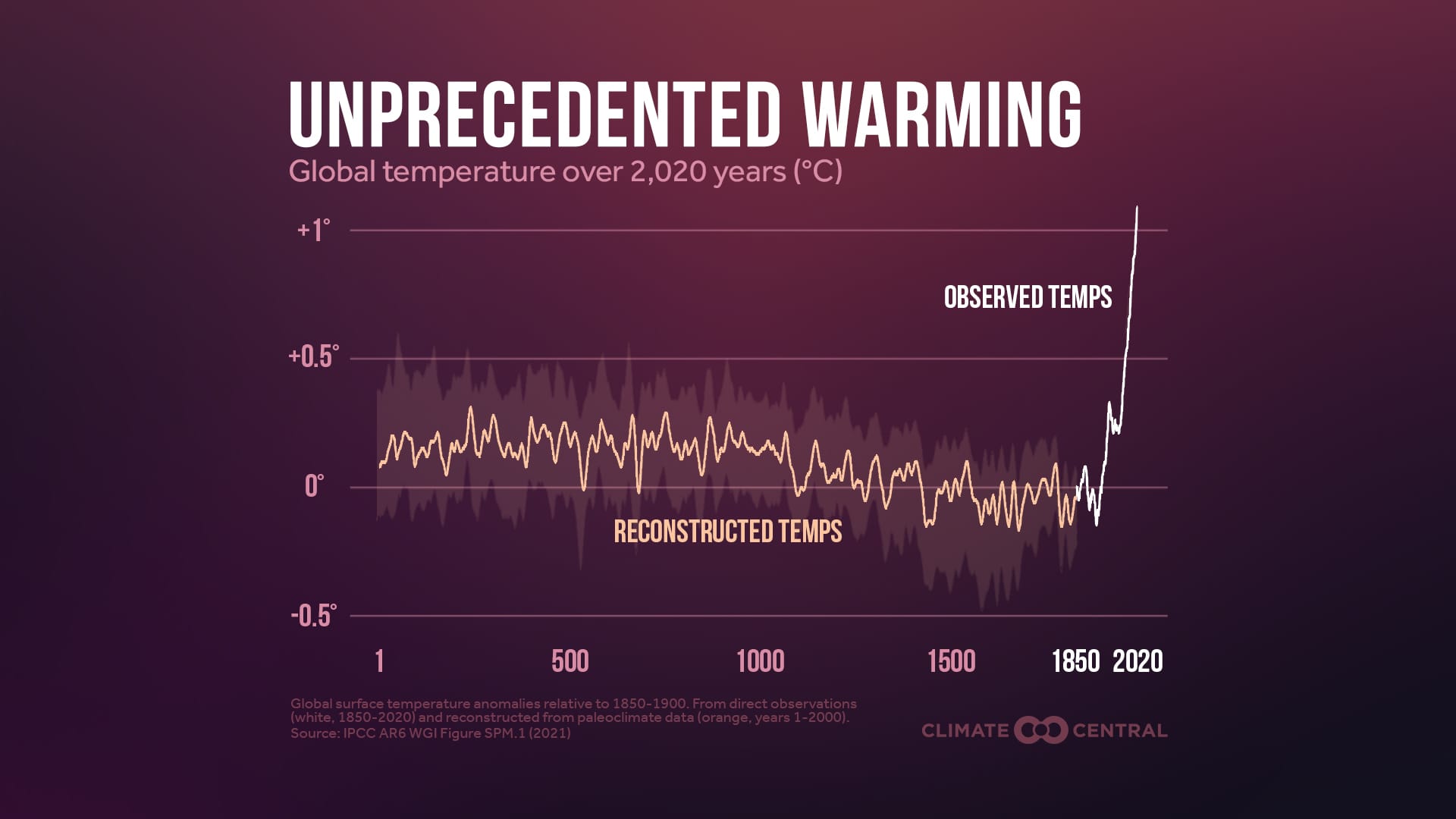
As exceptional as 2023 has been, it won’t be the last record-breaking year.
The World Meteorological Organization estimates there’s a 98% chancethat at least one of the years from 2023 to 2027 will be the hottest on record. The next five-year period (2023-2027) will almost certainly be the warmest five-year period ever recorded.
Each of these years is part of a larger trend of rapid warming since the industrial revolution kicked off a 17-decade surge in heat-trapping pollution from burning coal, oil, and natural gas. More pollution traps more heat and causes more warming.
Over the last 100 years, humans have released CO2 pollution at a far faster rate than any point in the previous 800,000 years of Earth history.
The planet has warmed far faster in the last 50 years than at any point in at least the past 2,000 years.
If warming continues at this pace, many of the extreme events and harmful impacts that people are already experiencing will worsen and bring new risks.
3. We know what’s causing rapid warming.
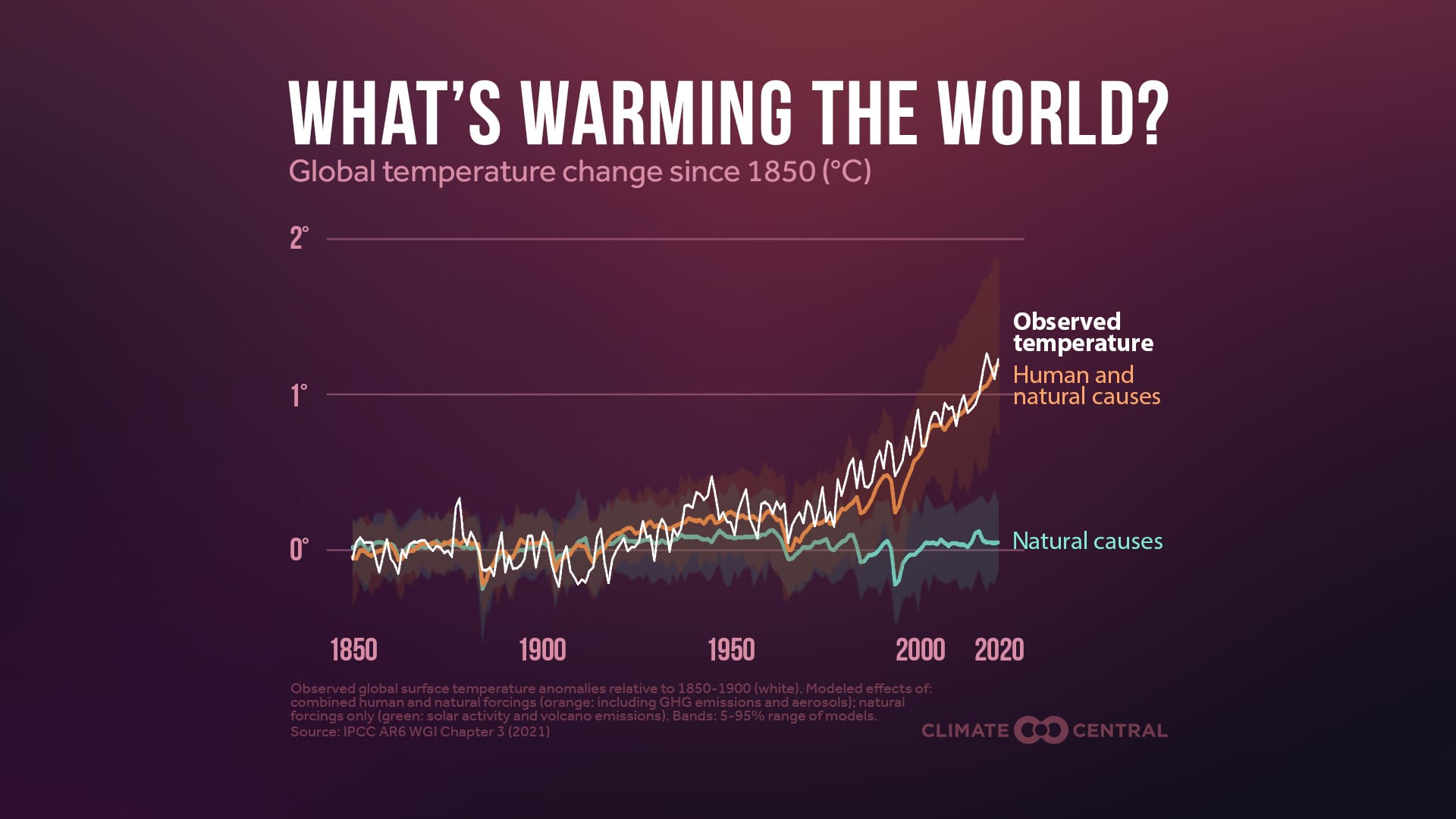
The main cause of rapid global warming today is heat-trapping pollution from human activities.
Climate has changed throughout Earth’s long history – including very rapidly at points in the deep past.
But the warming observed since 1850 cannot be explained by natural drivers of climate change — including El Niño, changes in the activity of the sun, and emissions from large volcanoes.
Climate models can only explain observed warming since 1850 when they include the effects of human activities — especially the increasing concentrations of heat-trapping greenhouse gas pollution.
Paired pollution and warming trends continue today. Heat-trapping carbon dioxide (CO2) pollution from burning coal, oil, and natural gas has never been higher, and the planet is hotter now than at any time in at least the last 125,000 years.
4. We know how to slow warming for a safer future.
Because we know the main cause of rapid warming, we know how to slow this trend and ensure a safer future with less warming and fewer risky extreme events: deep, rapid, and sustained reductions in heat-trapping pollution.
Moving toward clean and efficient sources of energy is key to achieving this.
According to the International Energy Agency, global carbon dioxide (CO2) pollution from the energy sector is set to peak during this decade as clean energy growth accelerates around the globe.
In the U.S., emissions of heat-trapping pollution have already fallen 12% from 2005 to 2019, partly due to burning less coal and using more renewable energy. But in order to meet national and global climate targets, this trend needs to accelerate so that emissions decrease by more than 6% per year on average.
Wind and solar energy capacity has grown while costs have dropped 70% and 90%, respectively, over the last decade.
And new laws are set to boost these trends. Solar and wind are projected to make up more than 50% of energy capacity by 2035 in 46 states.
5. Climate ambition is growing, but action is needed — and fast.
Climate impacts on health, ecosystems, and economies worsen with every bit of additional warming.
This is why nearly every country in the world agreed in 2015 to keep global warming well below 2°C (3.6°F) and was called on last week at COP28 to “transition away from fossil fuels” that cause heat-trapping pollution.
But there’s still a glaring gap between these risk-reducing targets and global climate action.
Even countries’ strongest pledges put the planet on track for between 2.5 - 2.9°C (4.5 - 5.2°F) of warming by the end of this century — far overshooting globally-agreed 1.5°C and 2°C limits.
And while there’s been progress under the Paris Agreement (pre-Paris pledges had the world on track to heat up a catastrophic 3.7°C (6.7°F) this century), far more is needed — and fast.
--30--
|
Cross-posted from Climate Central. Sign up for their newsletter here.
Comments


